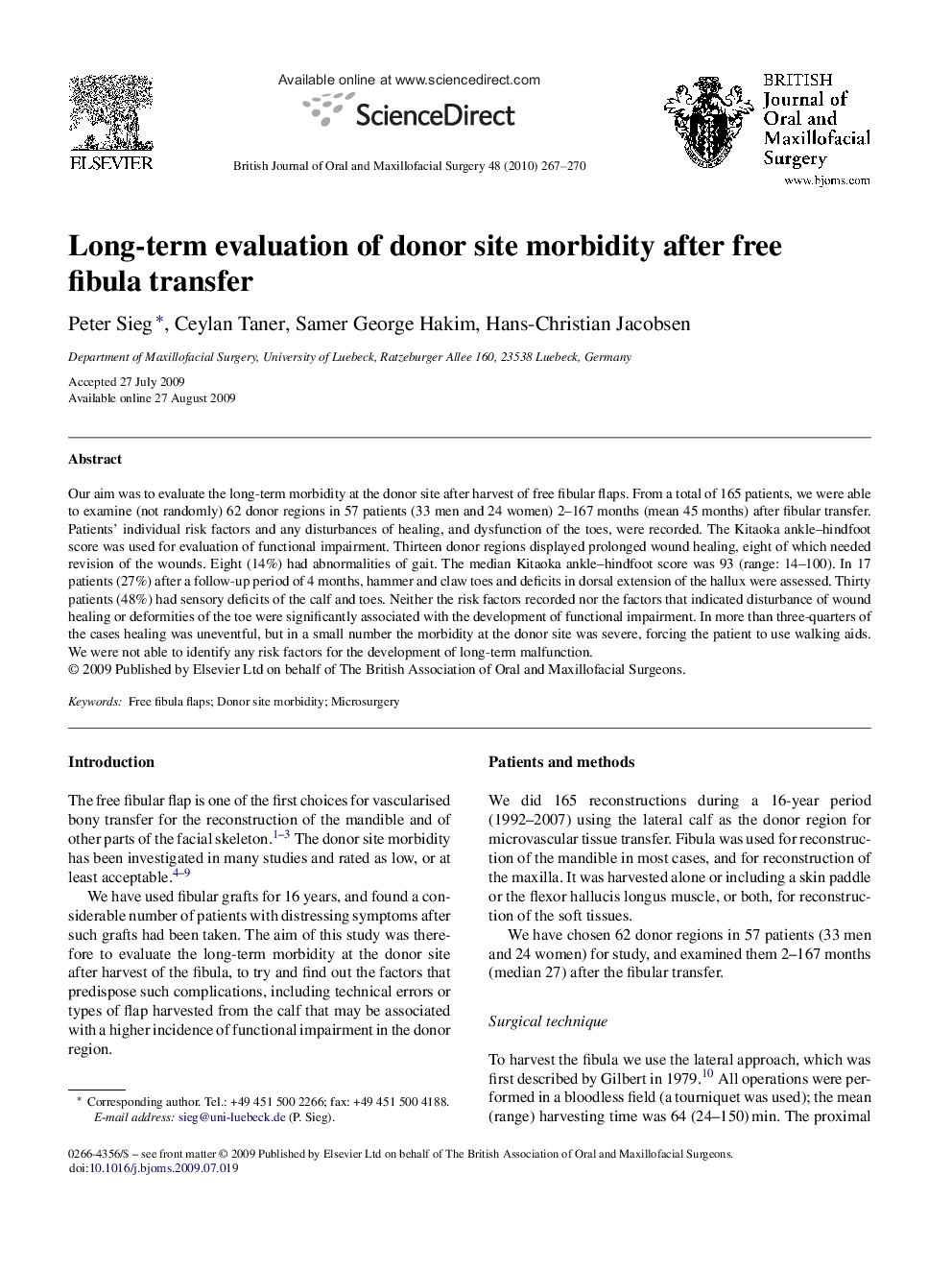| Article ID | Journal | Published Year | Pages | File Type |
|---|---|---|---|---|
| 3124763 | British Journal of Oral and Maxillofacial Surgery | 2010 | 4 Pages |
Our aim was to evaluate the long-term morbidity at the donor site after harvest of free fibular flaps. From a total of 165 patients, we were able to examine (not randomly) 62 donor regions in 57 patients (33 men and 24 women) 2–167 months (mean 45 months) after fibular transfer. Patients’ individual risk factors and any disturbances of healing, and dysfunction of the toes, were recorded. The Kitaoka ankle–hindfoot score was used for evaluation of functional impairment. Thirteen donor regions displayed prolonged wound healing, eight of which needed revision of the wounds. Eight (14%) had abnormalities of gait. The median Kitaoka ankle–hindfoot score was 93 (range: 14–100). In 17 patients (27%) after a follow-up period of 4 months, hammer and claw toes and deficits in dorsal extension of the hallux were assessed. Thirty patients (48%) had sensory deficits of the calf and toes. Neither the risk factors recorded nor the factors that indicated disturbance of wound healing or deformities of the toe were significantly associated with the development of functional impairment. In more than three-quarters of the cases healing was uneventful, but in a small number the morbidity at the donor site was severe, forcing the patient to use walking aids. We were not able to identify any risk factors for the development of long-term malfunction.
